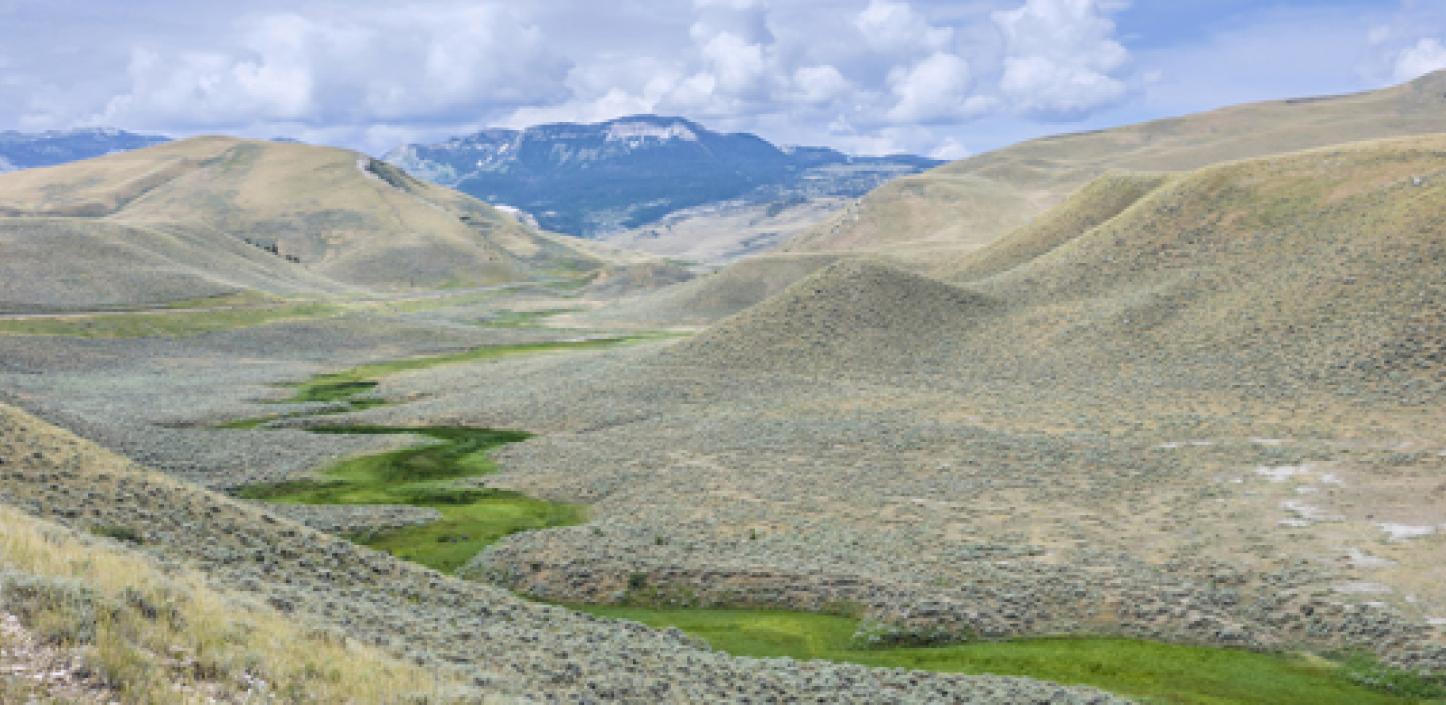
Sagebrush Landscapes Program
The Sagebrush Landscapes Program was created in 2017 to address bottlenecks in sagebrush conservation and promote healthy rural agricultural economies in the western United States. The program is a partnership between the U.S. Fish and Wildlife Service, the Bureau of Land Management, the U.S. Forest Service and NFWF.
The sagebrush landscape, is a vast, largely treeless and semi-arid system known for hot summers and cold winters. It consists mainly of rocky hills, native bunchgrasses and sagebrush, and is home to over 350 associated plant and animal species. The region spans from eastern Washington, Oregon and California, through the Great Basin of Nevada and Idaho, up the high valleys of the Intermountain West in Utah, Colorado, Wyoming and Montana to the western edge of the Great Plains in the Dakotas.
The sagebrush landscape has diminished from 156 million acres to 100 million acres since settlement began in the western United States. Sagebrush face numerous threats including invasive species such as cheat grass, conifer encroachment, altered fire regimes, unmanaged grazing and human development and disturbance. Unless threats are addressed, the impact will compound over time, transporting the ecosystem to a state that will be difficult, if not impossible, to restore to its native condition.
The Sagebrush Landscape Program was created in 2017 to address bottlenecks in sagebrush conservation and promote healthy rural agricultural economies in the western United States. The program is a partnership between the U.S. Fish and Wildlife Service, the Bureau of Land Management, the U.S. Forest Service, the USDA's Natural Resources Conservation Service and NFWF.
Key conservation strategies for this program include:
Wet meadow habitat enhancement and restoration: Found across the entire sagebrush landscape, wet meadow habitats often make up less than two percent of the landscape and are critically important to a wide array of species including the iconic pronghorn, mule deer and sage grouse, as well as several types of sagebrush- and wetland-reliant species. Wet meadows have been specifically identified as high-priority by the Natural Resources Conservation Service-led Sage Grouse Initiative and multiple other partners. Numerous recent scientific publications support their importance for wildlife habitat, livestock production and biodiversity hotspots. Throughout the region, degraded wet meadows are a significant resource concern that have received little attention to date. NFWF investments will help advance awareness, technical resources and localized action for the conservation of these important habitats.The “all lands” management approach: Throughout much of the West, land ownership is spread across Private, State, and Federal parcels. As a result, implementing a landscape approach to conservation efforts can be challenging. NFWF will support additional capacity in areas that can benefit from cross-jurisdictional project management furthering conservation efforts for sagebrush landscapes and the associated species.
| 2017 Grant Slate | Download the PDF |